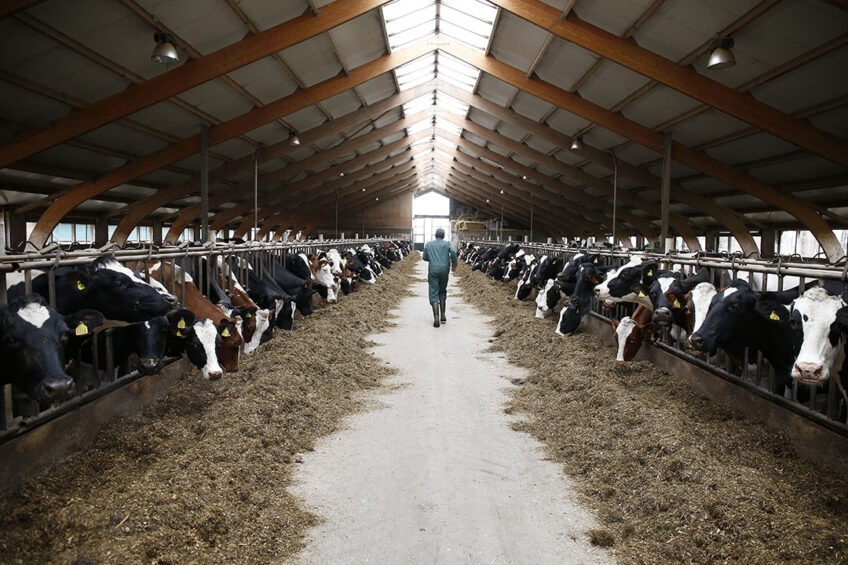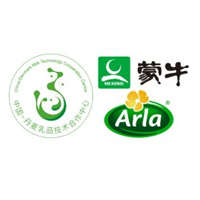7 secrets of high yielding dairy cows in China

According to statistics, the highest yielding dairy farms in China are so-called large-scale farms, meaning farms with thousands of cows. Many of those farms have an average yield close to 12,000 kg per cow per year and the farm with the highest average yield in China, in 2020, had 13,654 kg/cow/year. This is especially impressive as the farm, named Chifeng AustAsia has thousands of cows.
When looking at data from the large-scale farming companies one of them stands out, the AustAsia farming company that has 8 dairy farms in China, and Chifeng farm is one of them, and 91,000 dairy cattle. The cows in this farming company yield on average 12,6 tons.
But how did the Chinese farms change so quickly from low yielding cows to high yielding in only few decades? There is a common thread:
 Minimise stress
Minimise stress
One of the main secrets to success is to respect the animals and do whatever is possible to minimise the stress of the herd. Here it is important not only to pay attention to the lactating cows, but also to prevent and control the stress of other non-lactating cows. But what does this mean? In short it means to have focus on things like design of the farm, the daily production, pay attention to all stages of dairy cow breeding and keep the environment clean and dry. Also to make sure that ventilation works at all times, density is right, drinking water is good and accessible, animals are not suffering from hot- or cold stress, hoof and mastitis infection is kept at minimum frequency and that animals are moved around and between groups in a right way so they do not get stressed because of that.
 Controlled feeding
Controlled feeding
Farmers and farm managers must pay attention to the detailed controlled feeding management. Not only pay attention to the refinement of the feed mix formula, but also the refined management of the feeding process. TMR verification must be carried out once a month to check the details of the blades, augers, whether there are dead corners during mixing, whether the feeding can be thrown out, etc., to monitor the accuracy of TMR charging and feeding, and monitor the uniformity of mixing. Furthermore, to understand the possible changes in the raw materials that are used and optimise the feed mixing formula suitable for the farm. To reach high yielding cows, the requirement for the roughage needs to be clear and especially the proportion of roughage NDF in dry matter and NDF digestibility. It is also important to monitor the DMI of the herd, and the amount of leftover. Feeding high-quality roughage increases the DMI of lactating cows but if roughage is no good and there is no detailed management regarding the feeding, the dry matter intake will be lower. Then the milking peak within the lactation, that is essential for high yield, will definitely not be reached.
The average yield of all the cows in the province has now exceeded 9,000 kg, placing the Ningxia province among the top provinces in the country.
 Milking and feeding frequency
Milking and feeding frequency
It is well known that milking frequency positively influences the yield of cows by better utilising the milk production organs of the cows and most Chinese farms milk 3 times a day and some even 4 times as is the case at the highest yielding farm in China previously mentioned. But milking frequency alone is not enough, the feeding frequency also has a big impact on the yield – pushing in feed, up to 16-21 times per day is a main trend in China.
 Skilled employees
Skilled employees
One of the clear benefits of large-scale farms is the fact that those farms can have their own advisers and veterinarians working 24/7 on the farms. This leads to high professionality and quick find of solutions to possible problems. At AustAsia one of the key elements is the nutrition of the animals and their own nutritional team is in charge of the feed recipes for all groups. There are breeding teams, veterinary teams etc. these skilled teams secure the best possible outcome at any given time.
 Focus on reproduction
Focus on reproduction
To increase the yield, there must be high focus on proper breeding results, and the 21-day PR of good breeding is >30%. To ensure the continuous increase in production, farmers have to focus on the future and minimise the production of offspring from cows with low genetic quality and let these cows instead be inseminated with beef cattle. Maintain a reasonable number of young cattle and reduce cash input for young cattle.
 Good overall management
Good overall management
All of the above requires that farmers or managers have advanced management concepts and skills to manage properly. One of the key elements of good and stable management is the use of SOP’s and LEAN principle, a management system that is safe to say that most if not all the large-scale farms in China have adopted, which has led to outstanding results.
The number of dairy cows in the region reached 574 thousand, an increase of 137 thousand cows in only one year.
 Good farming framework
Good farming framework
Another noteworthy reason for high producing dairy farming is the grouping of farms. A good example is dairy farming in Ningxia province. Ningxia province is becoming a dominant dairy production area in China after the authorities, only few years ago, decided to focus specifically on the dairy industry and turn it into a key industry for the province. By doing so, the province has made good conditions for farms to grow and expand and at the end of 2020, the number of dairy cows in the region reached 574 thousand, an increase of 137 thousand cows in only one year. At the same time the development the dairy processing has also rapidly improved in the province.
Furthermore, this special focus by the authorities has led to building of many new large-scale dairy farms and now over 66% of the farms have more than 1,000 dairy cows. The average yield of all the cows in the province has now exceeded 9,000 kg, placing the Ningxia province among the top provinces in the country. The rapid development of dairy farming in Ningxia has also shown remarkable results which is the tremendous change of the older dairy farmers in the province. They have changed their way of farming and turned to detail control and controlled management by both participating in training sessions but also by learning from each other.
Join 13,000+ subscribers
Subscribe to our newsletter to stay updated about all the need-to-know content in the dairy sector, two times a week.










